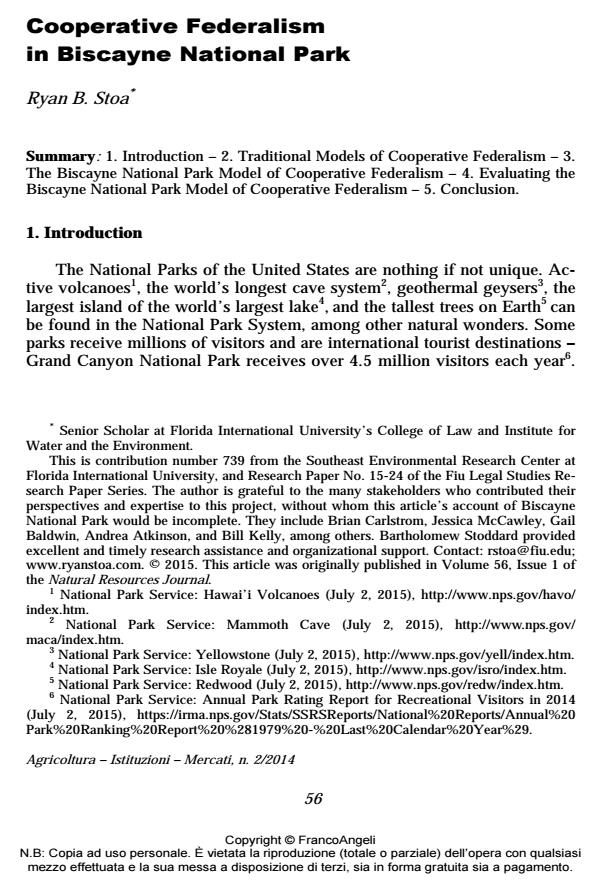Cooperative Federalism in Biscayne National Park
Journal title AGRICOLTURA ISTITUZIONI MERCATI
Author/s Ryan B. Stoa
Publishing Year 2015 Issue 2014/2
Language English Pages 45 P. 56-100 File size 186 KB
DOI 10.3280/AIM2014-002004
DOI is like a bar code for intellectual property: to have more infomation
click here
Below, you can see the article first page
If you want to buy this article in PDF format, you can do it, following the instructions to buy download credits

FrancoAngeli is member of Publishers International Linking Association, Inc (PILA), a not-for-profit association which run the CrossRef service enabling links to and from online scholarly content.
Biscayne National Park is the largest marine national park in the United States. It contains four distinct ecosystems, encompasses 173,000 acres (only 5% of which are land), and is located within densely populated Miami-Dade County. The bay has a rich history of natural resource exploitation, but aggressive residential and industrial development schemes prompted Congress to create Biscayne National Monument in 1968, followed by the designation of Biscayne National Park in 1980. When the dust settled the state of Florida retained key management powers over the park, including joint authority over fishery management. States and the federal government occasionally share responsibility for regulating natural resources, but Biscayne National Park represents a unique case study in cooperative federalism. This article explores these cooperative federalism contours in order to assess whether the park’s management paradigm provides a model worthy of replication. A diverse range of materials were reviewed for this project, including literature and jurisprudence on traditional models of cooperative federalism, federal natural resources laws, national park regulations and policy, Biscayne National Park’s statutory frameworks and legislative history, state and federal management plans, inter-agency communications, and direct stakeholder interviews. They combine to tell a story of cooperative federalism that has been frustrating and, at times, incoherent. But the story also shows that shared responsibility over fishery management has produced beneficial results for the park and its stakeholders by forcing state and federal officials to work together on planning and enforcement, diversifying human and financial resources, and incorporating federal, state, and local interests into park management and policy. The research suggests that future applications of the Biscayne National Park model of cooperative federalism, in which states and the federal government share joint authority over marine resources in some capacity, may enjoy similar success.
Keywords: Cooperative Federalism; Biscayne National Park; Fishery Management.
Ryan B. Stoa, Cooperative Federalism in Biscayne National Park in "AGRICOLTURA ISTITUZIONI MERCATI " 2/2014, pp 56-100, DOI: 10.3280/AIM2014-002004